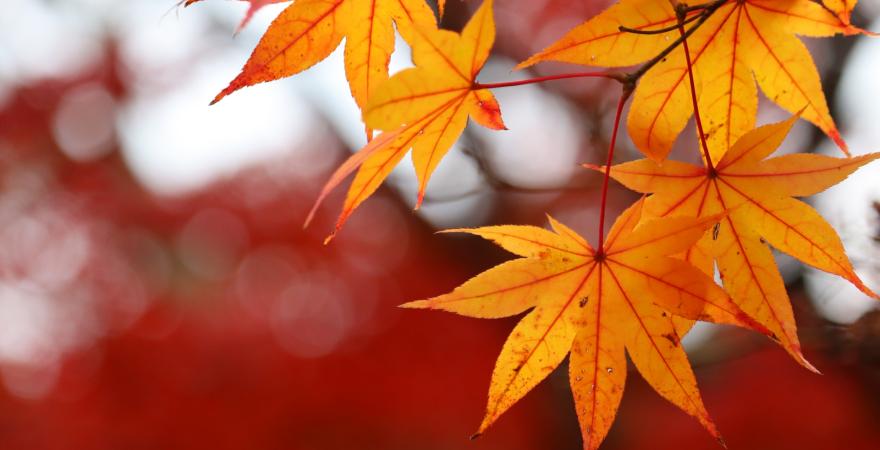
Daily Eating Tips for Autumn Health in TCM
As autumn arrives, temperatures begin to drop and the air turns dry. Our bodies reflect these seasonal changes, often losing moisture along the way. This dryness can affect the respiratory system—the nose, mouth, and lungs—making us more prone to a dry throat, sneezing, or catching colds. It’s also a time when some people feel their mood grow heavier.
In Traditional Chinese Medicine (TCM), autumn corresponds to the Lung. The lungs are especially active now, but because they are delicate and dislike dryness, autumn dryness is considered their biggest challenge. To restore the energy consumed during summer and prepare for the cold months ahead, it’s important to care for the lungs and throat by keeping them moist, nourished, and gently warmed.
By tuning in to these seasonal shifts and supporting our bodies with the right foods and habits, we can move through autumn with greater balance, comfort, and resilience—ready to welcome the winter season ahead.
In TCM, autumn is associated with:
Element – Metal
Yin organ – Lungs
Yang organ – Large Intestine
Emotion – Grief
Taste – Pungent
Color – White
Yin and Yang in Autumn
In TCM, the balance of Yin and Yang shifts with the seasons. Autumn marks the transition from the high-energy Yang of summer to the quieter, restorative Yin of winter. As the days shorten and nights grow longer, Yin energy naturally begins to increase, while Yang energy gradually declines.
This seasonal shift can be felt in our bodies. We may find ourselves slowing down, craving more rest, or seeking warmth and comfort. At the same time, the dry air of autumn can disturb the balance between Yin and Yang—too much dryness may deplete Yin fluids (the body’s nourishing moisture), leading to symptoms such as dry throat, cough, rough skin, or irritability.
Seasonal Foods to Support Your Health in Autumn
By understanding both the Lung’s connection to autumn and the seasonal shift of Yin and Yang, we can better support our health during this time of year. Choosing foods that moisten dryness, nourish Yin, and gently warm the body helps keep the lungs comfortable and the whole system in balance. Along with mindful rest and simple self-care, these habits allow us to enjoy the beauty of autumn while preparing our bodies to meet the colder winter months with strength and resilience.
1. Nourish your Yin – support your body fluids and prevent dryness
The highlighted foods below are especially good for moistening the lungs, protecting against autumn dryness with their gentle, hydrating nature.
Grains:
Wheat, Barley, Millet
Meat & Seafood:
Duck, Pork, Silkie chicken, Abalone, Oyster, Scallop, Mussel, Squid
Vegetables & Fruits:
Japanese mustard spinach, Asparagus, Carrot, Spinach, Chinese cabbage, Lotus root, Lily bulb, Apple, Strawberry, Grape, Pear, Peach, Lemon, Fig
Others:
Goji berries, Pine nuts, Peanuts, Black sesame, White sesame, Eggs, Tofu, White fungus, Cheese, Milk, Honey, Soymilk
2.Eat Pungent Foods in Moderation – Support the Lungs Without Causing Dryness
In autumn, a small amount of pungent flavor can support Lung function by promoting circulation and dispersing stagnation. However, too much may worsen dryness, so moderation is key.
Examples of pungent foods:
Garlic, Ginger, Chili pepper, Mustard seeds, Clove, Thyme, Onion, Spring onion, Leek, Cilantro, Radish
3.Replenish and Steady Your Qi – Restore Energy for the Colder Months
After the activity and heat of summer, autumn is the time to restore Qi and gently prepare for the winter ahead. Foods that warm the body help keep your energy steady and balanced, countering the cooling shift of the season.
However, autumn weather can still be hot in some regions. In such cases, instead of focusing on warming foods, it’s better to include ingredients that help clear internal heat and keep the body cool.
The highlighted foods are especially helpful for warming and stabilizing Qi.
Grains:
Rice, Glutinous rice, Oatmeal
Meat & Seafood:
Chicken, Beef, Pork, Lamb, Eel, Tuna, Cod, Shrimp
Vegetables & Others:
Chinese yam, Taro, Potato, Sweet potato, Pumpkin, Avocado, Cabbage, Cauliflower, Broccoli, Beans, Mushrooms, Chickpeas, Walnuts, Chestnuts, Jujube
Please remember that we all have different body constitutions, so it’s important to understand your own type when choosing foods.